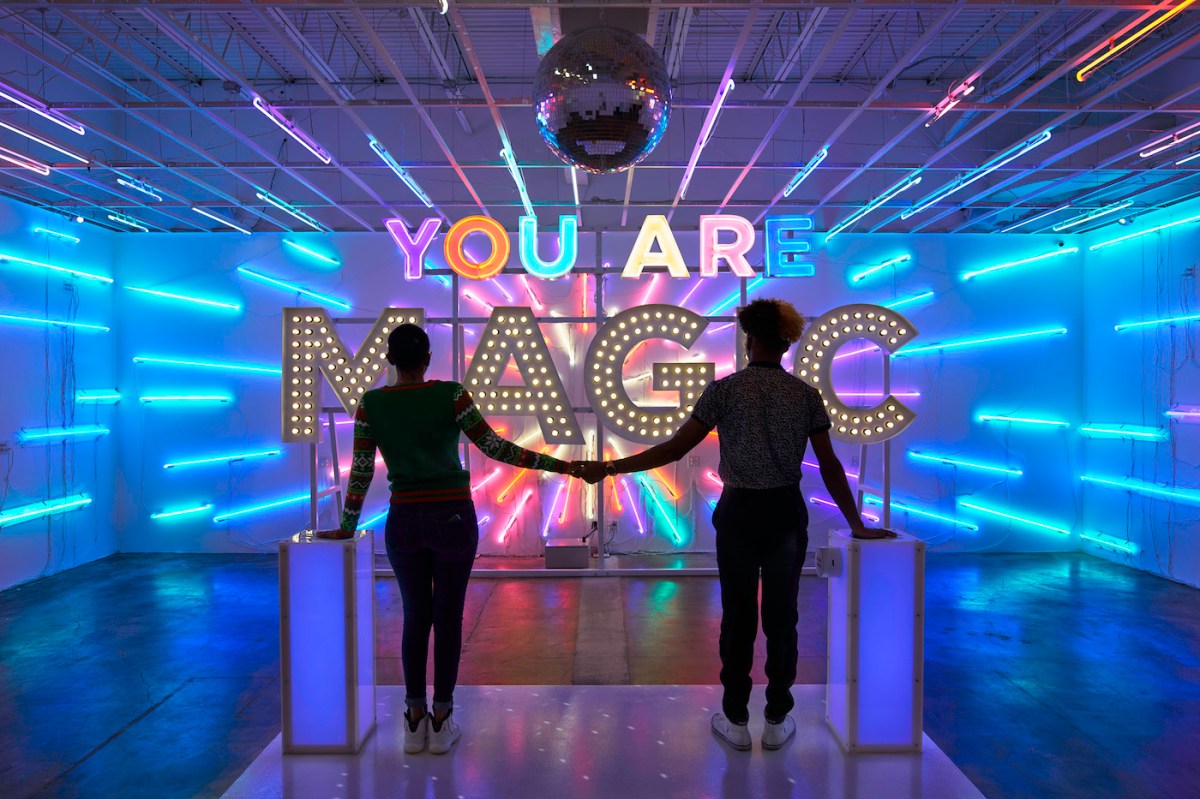
 BY YANNIC RACK | When Yvonne Collery returned to her apartment for the first time after the explosion that rocked her block in the East Village in late March, she didn’t immediately grasp how bad the damage really was.
BY YANNIC RACK | When Yvonne Collery returned to her apartment for the first time after the explosion that rocked her block in the East Village in late March, she didn’t immediately grasp how bad the damage really was.
“At first I thought it was just the plaster hanging down,” she says of the ceiling in her apartment of 30 years, which had collapsed almost entirely.
“It wasn’t until I tapped it, I said ‘Holy crap, that’s the walls from the apartment [above] sticking through, pushing through my ceiling’. They had to go from the bottom and chainsaw them out.”
Collery’s apartment on the fourth floor of 125 Second Ave. was among the most damaged, but at least it was still standing. The explosion, which was caused by an illegal gas main tap at a Sushi restaurant two doors down, and the subsequent fire, had leveled three buildings and claimed two lives by the time the situation was under control the next day.

Now, more than six months later, some tenants have still not been able to return to their apartments in Collery’s building, including her. She has been staying with friends and family since the tragedy that uprooted her life, but she says she never expected to be gone for this long, despite the destruction.
“I keep changing the date for the moving company,” she says. “It’s been pretty grueling, but at least we know we’re coming back, unlike the people in the three buildings [that were destroyed]. That keeps me in perspective.”
The feeling is echoed by others in her building.
“People lost way more than I did. There’s still an apartment for me to go back to, some people lost everything,” says Jennifer Porto, who shared a two-bedroom apartment with a roommate on the building’s sixth floor. Her roommate is not moving back.
Their unit suffered especially because it was reached by the flames from the burning building next door.
“It was pretty burnt. The entire living room area was completely burnt, my roommate’s room was the same,” Porto says. “My room was not as bad with the fire damage, but the water and smoke damage ruined all my clothes and everything.”
Porto, who moved into the apartment two years ago and works at a digital media company in Midtown, still vividly remembers the day of the explosion. She was at work and first saw footage of the fire on Periscope, a live video streaming app.

The shapes of two graves have been marked out with stones and memorials left at the explosion site, in memory of Nicholas Figueroa and Moises Lucan, who both died in the fiery explosion at Second Ave. and E. Seventh St. on March 26.
“All that we saw was just the disaster unfolding, it was so sad and so scary to be watching it,” she says. “I mean I’m glad that I wasn’t home but it was also so weird to just be watching, not knowing what you would come home to. And then that night no one was allowed to go over there. I tried to go home after work, but the fire fighters wouldn’t let me through.”
She initially stayed in hotels after the explosion but soon switched to couch surfing with friends on the Lower East Side and living with her boyfriend in the Bronx.
“I think they’re in the process of refurbishing it and they’re probably another month or two away from finishing,” Porto said of her apartment last month, adding that she hasn’t been back in the building since April.
“Whenever I’m in the area, I pass by and it makes me sad that I’m not there. I say to people, ‘can we go down First Avenue, or can we go down this way?’ I just don’t want to pass by because I loved living there,” she says.
Although most of the tenants have moved back into 125 Second Ave., there is still no cooking gas. At 41 E. Seventh St., the other building around the corner that was also damaged by the blast, the gas was only turned back on at the end of August.
In that building, the remaining tenants are currently trying to get rent abatement from their landlord, according to Steve Herrick, executive director of the Cooper Square Committee, which provided temporary housing to around seven households from the three buildings that collapsed.
According to Herrick, many tenants at 41 E. Seventh St. waited for a few weeks until the air quality got better, while some didn’t return at all even though their apartments were largely unharmed.
“Overall, people told me almost half the apartments got vacated, and people just didn’t bother to come back,” he says. “In a way, the landlord benefitted from this – they have to resolve their insurance claims, but I’m sure they get a vacancy increase on all those apartments.”
Herrick thinks all of the building’s original tenants – the ones who were there before the explosion – are back in their homes now.
Stuart Lipsky has lived on the second floor of 125 Second Ave. since 1980 and he and his wife Kayoko raised their 13-year-old daughter Hannah in the building. Three months before the explosion, they had put in a new kitchen.
The family moved back in late June after Stuart, a retired chemistry teacher, had fixed up the whole apartment for three months, replacing the windows, cleaning out mold and broken furniture and painting the walls. He still has to replace the floor.
“If I was waiting, I would have been just sitting here, sucking my thumb,” he says, sitting in the living room of the apartment, under a set of landscape paintings made by his late father, which were unharmed safe for a few chips of paint.
“During three months, Stu came here every day,” his wife, Kayoko, says. “Eventually it became okay.”
He also mounted movable metal grates onto the windows, as protection against burglars. There used to be a narrow airshaft outside, but since the buildings collapsed there has been an empty lot next door – empty except for two symbolic graves that are regularly tended to by the families of the men that died in the explosion.
“We’re the crypt masters now. The parents still come every other day,” Stu says, adding that he sometimes lets them in through their building, which has a backdoor that leads onto the lot.
The Lipskys didn’t know either of the men personally (one of them was a customer at the restaurant; the other worked there) but they still grieve their own loss: one of their two cats, Rice, has been lost since March.
When the explosion happened, none of them were at home, but Stu arrived even before the firefighters did. Contrary to everyone else, he ran back into his building, to try and save the two cats. He managed to find only one by the time the apartment was filled with smoke so thick that he couldn’t see his feet.
“Everyone said it was stupid to go back for the cat,” he says now. “I’m just sad I left when I did. But it was time to go. I wanted to see my daughter’s Bat Mitzvah.”
Both Stuart and Kayoko say that their daughter, who goes to school at NEST on the Lower East Side, was the key to moving on – with the planning around her Bat Mitzvah, in June, there was barely time to stop and reflect on what had happened.
“It’s like when a boat sinks, and you’ve got three people just holding each other in the water,” Stu describes the aftermath of the disaster. “You just manage to stay afloat.”
One of the many people that did not have a home to return to after the explosion is Diane McLean, a single mother who lived with her three young kids in a four-bedroom apartment at 45 E. Seventh St., one of the three buildings that were reduced to rubble by the early morning of March 27.
McLean had lived in the apartment almost her entire adult life, for 35 years.
“My three children were born into that apartment and it was the only home they’ve ever known,” she says. “All of my roots are in the East Village. I have neighbors in my building who I’ve known for 45 years.”
She says her job as a child psychiatrist at Lincoln Hospital in the Bronx enabled her to live at the apartment comfortably because it was rent-stabilized, but it proved essentially impossible to find a similar home in the area at market rate.
The Cooper Square Committee offered them housing (McLean says two of her co-residents took advantage of the offer), but all that was available was a studio, way too small for four people.
She eventually found an apartment in Bushwick at the end of April. It is actually larger than their old place, but also far more expensive. “That’s an issue of course. And it isn’t in our old neighborhood,” McLean says, adding that her kids still attend the Children’s Workshop School on E. 12th St.
She also emphasizes how much support her family received from teachers, parents and students at the school, who raised money and donated clothes and, most importantly, emotional support.
“We are walking around in clothes that friends have given us. We’re wearing people’s care. That’s actually pretty wonderful,” she says.
McLean, along with everyone interviewed for this article and many others, started an online fundraiser to get by. Most of them are collected on a dedicated Web site, helpeastvillage.com, and all of them have not reached their funding goals yet.
Without exception, everyone still praises the help and kindness of strangers and friends alike.
McLean lost things that “can’t be replaced”, like portraits of her grandmother’s family from the 1920s and 30s.
“I think we’re really lucky, I’m grateful every day,” she says. “But every day it’s sad at the same time. My older daughter can’t sleep at night. She still worries that anywhere we are we’ll have a gas explosion and a fire. She won’t go near that block.
“You build a life, piece by piece, and fabric by fabric. To have that destroyed in a day is devastating.”





































